NPS Website; Local Website
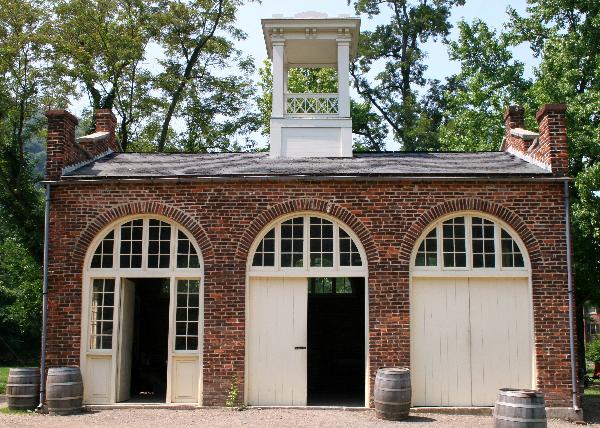 WHAT IS IT?
WHAT IS IT?Site of many American historic events, the most famous of which being wild-haired abolitionist John Brown’s October, 1859 raid of Harpers Ferry’s Federal Armory.
BEAUTY (8/10)
When you cross into West Virginia, things change. Your surroundings feel denser, the hillsides and the forests look bluer and the rivers take charge. The terrain rises to unforeseen heights and dips dramatically causing great gorges and dizzying slopes. Upon this impossible geography stand quirky old towns that embrace the past on their own terms. Traversing their blocks is a roller coaster ride, geographically, mentally and historically.
Harpers Ferry is the most famous of these uniquely West Virginian beauties. But wherever we’ve gone it has been the same: Wheeling, Beckley, Morgantown, Charlestown. At Harpers Ferry, the NPS ably helps the town retain its West Virginia charm. Two blocks of restored Shenandoah Street buildings double as NPS museums and portals into the past.
Harpers Ferry begs you to wander. Crooked stone sidewalks climb upward to historic churches and river vistas. Narrow passageways between buildings lead to enchanting inner courtyards. A footbridge across the Potomac guides one to canal trails and abrupt climbs up sugarloaf hills. The visitor has a plethora of choices: where to go, how to get there and which time period to experience, are all up to you.
HISTORICAL INTEREST (9/10)
The Harpers Ferry NHP aims to educate the visitor about six disparate but interweaving themes: African-American history, the John Brown raid, the natural environment, industry, transportation and the Civil War. Its approach correctly characterizes Harpers Ferry as both a typical American 19th Century industrial town and a place where extraordinary and important things occurred.
Harpers Ferry owes its volatile and eventful history to one thing: guns. In 1799 the federal government established its second United State Arsenal and Amory here because of the town’s choice natural location at the confluence of the Shenandoah and Potomac Rivers. From 1799 until the beginning of the Civil War in 1861, every gun manufactured in the United States came from either Harpers Ferry or Springfield, Mass.
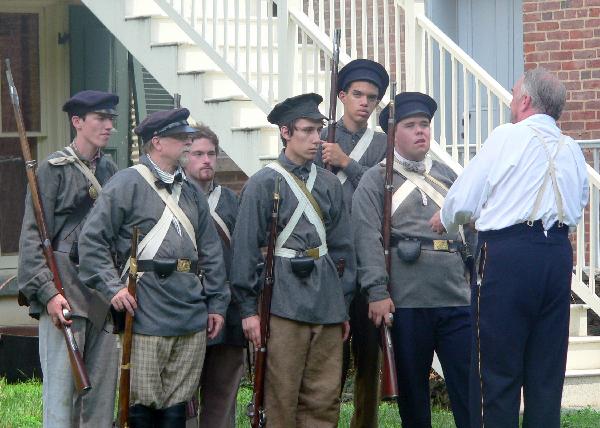 John Brown came here in 1859 because of the guns. He aimed to capture the Arsenal, distribute the guns to the surrounding slave population and start a multi-state armed insurrection. Or at least that is the understood premise. Of course, the raid failed. His 21 compatriots were easily captured and/or killed by the federal troops led by future Confederate army commander Robert E. Lee.
John Brown came here in 1859 because of the guns. He aimed to capture the Arsenal, distribute the guns to the surrounding slave population and start a multi-state armed insurrection. Or at least that is the understood premise. Of course, the raid failed. His 21 compatriots were easily captured and/or killed by the federal troops led by future Confederate army commander Robert E. Lee.A more practical conclusion is that John Brown knew the Harpers Ferry raid was a fool’s mission. He believed that through his (assured) capture and (inevitable) hanging his martyrdom would achieve an effect far more powerful than a slave revolt; it would begin a civil war. If an affecting martyrdom was his aim, then John Brown’s raid was an overwhelming success.
Brown’s raid put fear in the hearts of Southern plantation, rallied northerners to the abolitionist caused and hurtled the country towards the Civil War.
Multiple battles of the Civil War were fought at Harpers Ferry, the town changing hands many times. The most important of these fights occurred just days after the War’s beginning when Southern troops seized and captured the Arsenal and Armory. The Confederates brought the guns as well as the gun-making apparatuses back to Richmond, ironically arming their rebellion using the same proposed technique as their despised enemy, John Brown.
Post Civil War, John Brown’s Fort and the town of Harpers Ferry became sacrosanct places to Northerners and African-American’s alike. Storer College, one of the first historically black colleges, was founded here in 1867. In 1906, the first meeting of the Niagara Movement occurred on the campus of said college. The Niagara Movement, led by W.E.B. Du Bois called for full civil liberties for African Americans and in 1909 would become the NAACP, one of the most influential and important human right’s organizations of the 20th Century.
CROWDS (8/10)
With a population of only 300 people, the town of Harpers Ferry is nearing ghost town status. Nevertheless, you are bound to see a lot of people at the National Historical Park because during the day, the Lower Town pulsates with life. Day tripping families, meandering retirees, stripped-down Appalachian Trail thru-hikers, bused-in Japanese tourists, locals walking their dogs, costumed reënactors, Boy Scout troops and white-water thrill seekers all flock to the historic buildings and charming streets.
Despite the large crowds, we never felt crowded. The Park’s exhibits are spread throughout dozens of buildings, hiking trails travel in all directions and an open air park near John Brown’s Fort offers ample relaxation space.
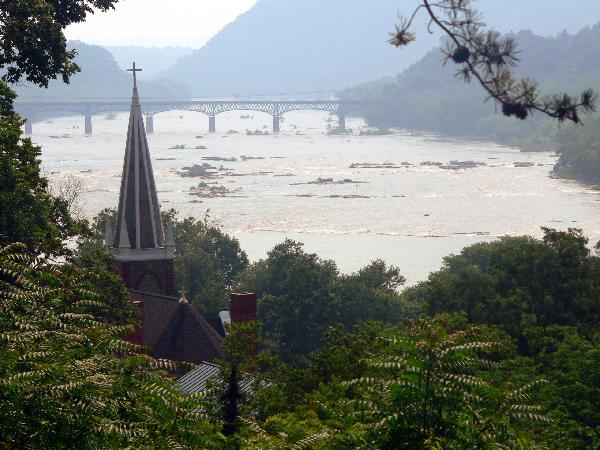 EASE OF USE/ACCESS (4/5)
EASE OF USE/ACCESS (4/5)Harpers Ferry, WV is about 20 miles west of Frederick, Md. via U.S. Route 340. Baltimore is 70 miles east via I-70 to U.S. Route 340 and Washington DC is 70 miles southeast via I-270 to U.S. Route 340 making Harpers Ferry a perfect day trip escape for denizens of those fair cities.
When Route 340 starts narrowing and twisting about 18 miles west of Frederick, you are almost there. Through cartographic quirk, you will pass through three states in less than a mile’s span: Maryland, Virginia and finally West Virginia. Once you’ve crossed the Shenandoah River, you are in Harpers Ferry. Turn left into the Visitor Center’s huge parking lot, park your car and take the shuttle bus into the Lower Town.
A Parking Lot exists at the Harpers Ferry Train Station, just blocks from the Lower Town exhibits, but fills very quickly. There is also a steep rocky 2.5 mile trail that leads to the Lower Town. The shuttle is your best choice.
Once in the Lower Town, visitors with physical limitations may find they want to stick to the level Shenandoah Street or equally flat C&O Canal towpath. Which is fine, most of the NPS buildings and exhibits are here.
CONCESSIONS/BOOKSTORE (5/5)
The Harpers Ferry NHP Bookstore stocks a ridiculously large amount of titles, including the best selection of African-American related books we have found throughout the National Park Service. Peruse carefully because unlike most NPS stores, a great portion of books here had their prices significantly reduced. Not only is the choice terrific, but you can also find some great deals.
The Harpers Ferry NHP concessionaire experience is also enhanced by the close proximity of independently-run shops and restaurants. Unlike most Park Sites, you do not need to search the ends of the earth to get a bite to eat or shop for the perfect souvenir. The corner of Hog Alley and High Street marks the invisible Park Boundary. Once you cross the street, you’ve left Federal jurisdiction and entered the free market.
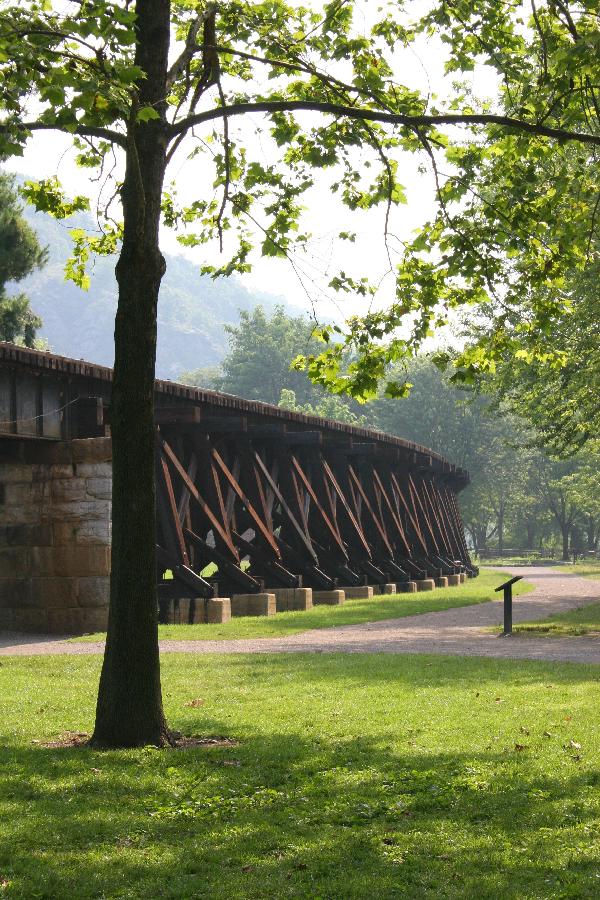 COSTS (3/5)
COSTS (3/5)$6 per vehicle or free with the National Parks Pass. Your $6 entrance costs is more of a parking fee than a Park entry fee. The buildings in the Lower Town are all free and do not require an “I Paid” sticker for admission; however, all parking costs money.
RANGER/GUIDE TO TOURIST RATIO (2/5)
Rangers are few and far between at Harpers Ferry. We experienced most of our Park interactions and historical questions via volunteers (period costumed and otherwise). We thought the Ranger scarcity was odd, especially because we visited during the Independence Celebration. No bother, the exhibits were sufficiently self-guided and we had a great time.
TOURS/CLASSES (5/10)
The Site delves into many different but interweaving educational topics. If you aim to learn everything in one visit, it could get confusing. In addition, some of the buildings offer self-guided exhibits that are newly refurbished and/or well-done while others showcase old and puzzling displays in cramped quarters.
We enjoyed the new John Brown exhibit building and the African-American history areas but were bewildered by the Civil War recounting. Somewhere between General McClellan finding the Confederate battle plans and the subsequent Union defeat (no, really) we shut off our in-depth learning switch and approached the Site on an ooh, that’s really cool level.
FUN (8/10)
We arrived early before the sun formed a haze and the shuttles started working overtime. We spent the morning taking pictures and climbing around stone steps up to Jefferson’s Rock and into narrow alley ways. In the afternoon, we took advantage of the many air conditioned exhibits in the town’s buildings and halls.
Practically every door we opened led to a new discovery – either a refurbished general store, a short movie about the messianic John Brown or an in-depth explanation of a burgeoning social movement. The variety of topics and things and people to see kept us entertained all day. Spots special to Lewis and Clark and the C&O Canal reminded us of many previously visited park sites. How cool when history converges on one site!
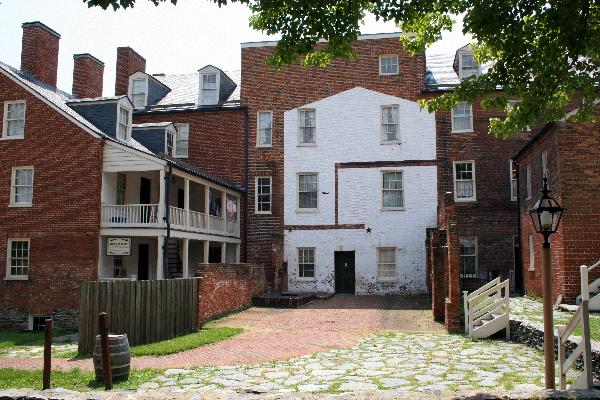 WOULD WE RECOMMEND? (9/10)
WOULD WE RECOMMEND? (9/10)Harpers Ferry NHP provides one of the best immersive historical experiences in the United States. The depth and diversity of learning opportunities could keep you entertained for days. But the key to the wonder of Harpers Ferry is a great time is not dependent on an historical interest. You could spend the day hiking and soaking in the stunning river views or you could approach the river from a more intimate vantage and rent an inner tube. Harpers Ferry makes for a terrific destination; it doesn’t matter what you choose to do once you are there.
TOTAL 61/80
www.usa-c2c.com
© 2004-06